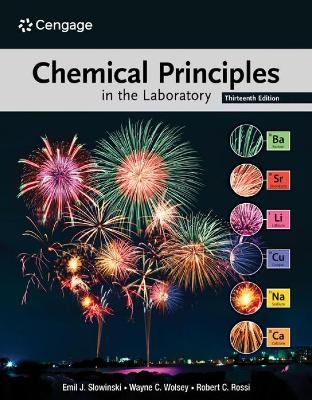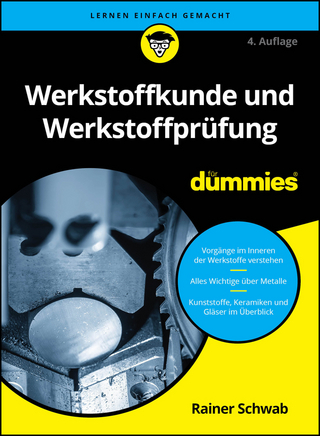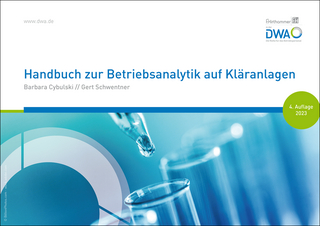
Chemical Principles in the Laboratory
Brooks/Cole (Verlag)
978-0-357-85127-2 (ISBN)
- Titel z.Zt. nicht lieferbar
- Versandkostenfrei innerhalb Deutschlands
- Auch auf Rechnung
- Verfügbarkeit in der Filiale vor Ort prüfen
- Artikel merken
Wayne C. Wolsey, Ph.D., is an inorganic chemist who received his bachelor of science from Michigan State University in 1958 and his doctorate from the University of Kansas in 1962. He joined the Macalester College faculty in 1965 and spent three sabbaticals at the Oak Ridge National Laboratory. Dr. Wolsey is noted for his work (in collaboration with a former student) in investigating various complexing agents for their effectiveness in dissolving calcium oxalate kidney stones. He has received various awards, including the Minnesota College Science Teacher of the Year in 1989, Macalester's Thomas Jefferson Award in 1993, designation as a MegaMole contributor to Minnesota Chemical Education in 1997, and an award from the Minnesota State AAUP Conference in 2001 for his support of academic freedom and shared governance. Now retired, he remains professionally active in a number of scientific organizations and continues his contributions to Chemical Principles in the Laboratory. Robert C. Rossi, Ph.D., is an entrepreneur in technology, education and applied science. He earned his bachelor of science in chemical engineering from the University of Wisconsin, Madison. Upon graduation he joined the Peace Corps and served as a teacher in the Fiji Islands. He then joined the California Institute of Technology, teaching and researching in the fields of applied photoelectrochemistry and semiconductor physics and eventually earning a doctorate in 2001. After several years teaching as a visiting professor at Carleton College, he moved to Macalester College, where he served as the Laboratory Supervisor in the chemistry department from 2003 to 2014. In 2011 he became a co-author of Chemical Principles in the Laboratory, with his contributions first appearing in the 10th Edition. Emil J. Slowinski, Ph.D., earned a bachelor of science from Massachusetts State College in 1946 and a doctorate in physical chemistry from the Massachusetts Institute of Technology in 1949. Over the course of his prolific teaching career, he taught at Swarthmore College, the University of Connecticut and Macalester College. His sabbatical leaves were taken at Oxford University and the University of Warsaw. He was a co-author, working with other authors like Bill Masterton and Wayne Wolsey, of more than 25 books in various areas of general chemistry. Even after retiring, Dr. Slowinski was actively involved in editions one through nine of Chemical Principles in the Laboratory, and after leaving active writing he offered insights, advice and support to his coauthors; he remains the main content source of this edition. Dr. Slowinski was an Emeritus DeWitt Wallace Professor of Chemistry at Macalester College until his death in 2015.
1. The Densities of Liquids and Solids.
2. Resolution of Matter into Pure Substances, 1. Paper Chromatography.
3. Resolution of Matter into Pure Substances, 2. Fractional Crystallization.
4. Determining a Chemical Formula.
5. Identifying a Compound by Mass Relationships.
6. Properties of Hydrates.
7. Analysis of an Unknown Chloride.
8. Using the Ideal Gas Law: Atmospheric Pressure and the Absolute Zero of Temperature.
9. Molar Mass of an Easily Vaporized Liquid.
10. Analysis of an Aluminum-Zinc Alloy.
11. The Atomic Spectrum of Hydrogen.
12. Periodic Trends in the Alkaline Earth Metals (Group 2) and the Halogens (Group 17).
13. The Geometric Structure of Molecules�An Experiment Using Molecular Models.
14. Heat Effects and Calorimetry.
15. Vapor Pressure and Enthalpy of Vaporization.
16. The Structure of Crystals�An Experiment Using Models.
17. Classification of Chemical Substances.
18. Some Nonmetals and Their Compounds�Preparations and Properties.
19. Determining Molar Mass by Freezing Point Depression.
20. Rates of Chemical Reactions, 1. The Iodination of Acetone.
21. Rates of Chemical Reactions, 2. A Clock Reaction.
22. Properties of Systems in Chemical Equilibrium�Le Ch�telier�s Principle.
23. Determining the Equilibrium Constant for a Chemical Reaction.
24. Standardizing a Basic Solution and Determining the Molar Mass of an Acid.
25. pH Measurements�Buffers and Their Properties.
26. Determining the Solubility Product of Ba(IO3)2.
27. Relative Stabilities of Complex Ions and Precipitates Prepared from Solutions of Copper(II).
28. Determining the Hardness of Water.
29. Synthesis and Analysis of a Coordination Compound.
30. Determining Iron by Reaction with Permanganate�A Redox Titration.
31. Determining an Equivalent Mass by Electrolysis.
32. Voltaic Cell Measurements.
33. Preparation of Copper(I) Chloride.
34. Development of a Scheme for Qualitative Analysis.
35. Spot Tests for Some Common Anions.
36. Qualitative Analysis of Group I Cations.
37. Qualitative Analysis of Group II Cations.
38. Qualitative Analysis of Group III Cations.
39. Identification of a Pure Ionic Solid.
40. The Ten Test Tube Mystery.
41. Preparation of Aspirin.
42. Rate Studies on the Decomposition of Aspirin.
43. Analysis for Vitamin C.
44. Fundamentals of Quantum Mechanics.
Appendix A: Vapor Pressure and Density of Liquid Water.
Appendix B1: Summary of Solubility Properties of Ions and Solids.
Appendix B2: Some Properties of the Cations in Groups I, II, and III.
Appendix C: Standard Atomic Weights of the Elements (Scaled relative to Carbon-12 = 12 g/mol).
Appendix D: Making Measurements�Laboratory Techniques.
Appendix E: Numbers in Science�Significant Figures and Making Graphs.
Appendix F: Suggested Locker Equipment.
Appendix G1: Introduction to Excel.
Appendix G2: Introduction to Google Sheets.
Appendix H: Statistical Treatment of Laboratory Data.
| Erscheinungsdatum | 20.03.2023 |
|---|---|
| Verlagsort | CA |
| Sprache | englisch |
| Maße | 230 x 276 mm |
| Gewicht | 862 g |
| Themenwelt | Naturwissenschaften ► Chemie |
| ISBN-10 | 0-357-85127-7 / 0357851277 |
| ISBN-13 | 978-0-357-85127-2 / 9780357851272 |
| Zustand | Neuware |
| Haben Sie eine Frage zum Produkt? |
aus dem Bereich


